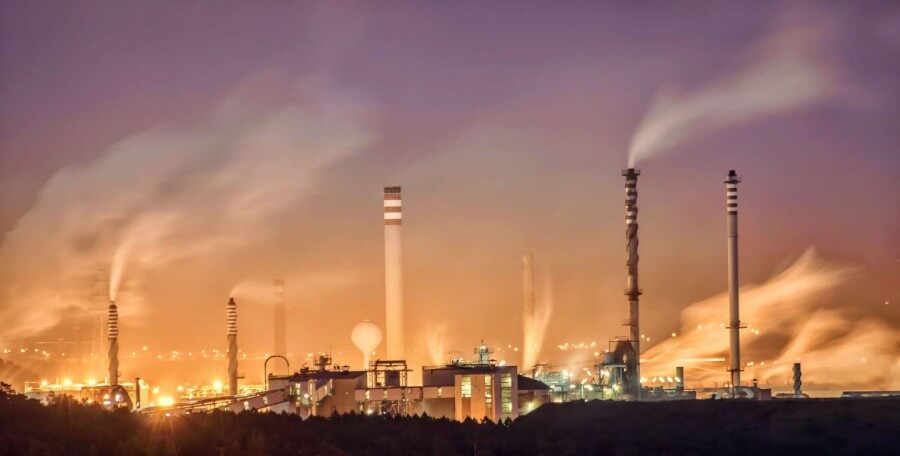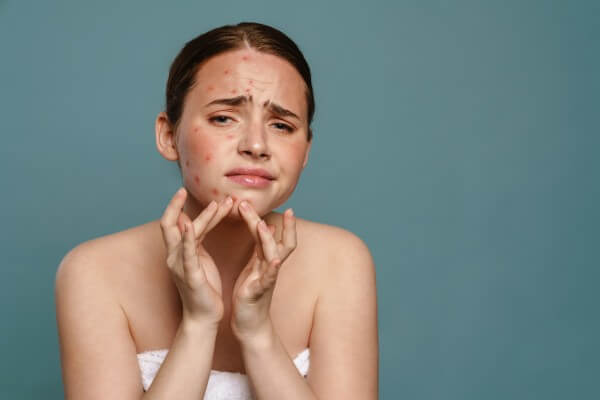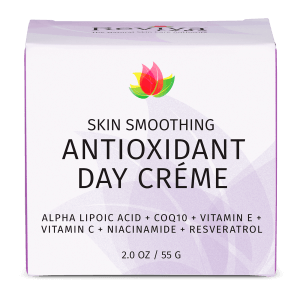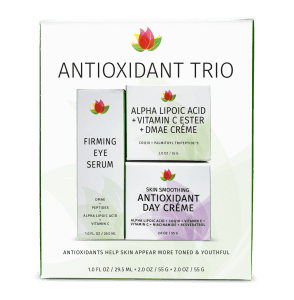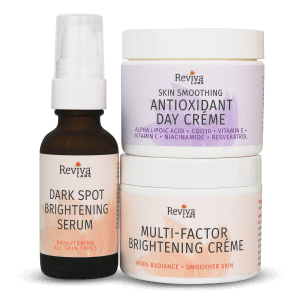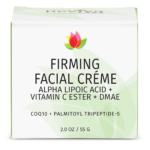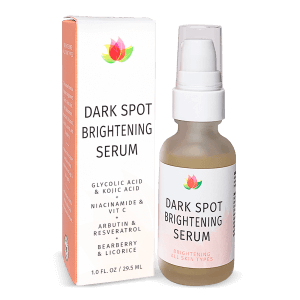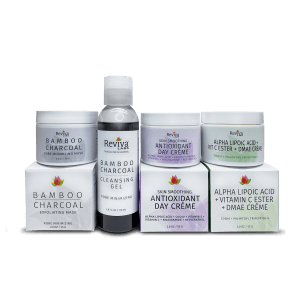Ingredients, Reviva Labs, Skin Care
How does environmental pollution affect your skin?
Our skin is our body’s largest organ. Its sole purpose is to keep bad things out and good things inside. It’s a barrier between our inner selves and the outside world. And while our skin has evolved over the millennia to be very good, today’s world is rife with new types of pollution that the skin isn’t well adapted to yet.
Pollution and toxic residue are prevalent in our daily lives. Car exhaust, factory emissions, chemicals, and even cigarette smoke all combine to pose a formidable assault on our skin. In many situations, we’re aware that chemicals or pollutants may be aerosolized and pose a risk, so we may don a mask or eye protection. But often, we’ll allow our skin to be exposed and coated; therein lies the problem.
Even innocuous tasks, such as cleaning off counters or painting a room can expose our skin to noxious ingredients that can make their way past our skin. Even simply shopping in busy or urban areas can expose our skin to dirt and grime that is often composed of pollution and chemical residue.
More and more research indicates pollution affects our skin
The dirt and grime of everyday living has become more problematic. Today, micro-sized particulate matter is a definite concern, especially in urban or congested areas. Smog and other air pollution collects on the skin and the small, aerosolized particles that were suspended are tiny enough to enter your pores or even pass through your epidermis. Studies of specific groups regularly exposed to environmental pollutants (i.e., road crews, roofers, foundry workers, etc.) demonstrate transcutaneous pathways allow debris to penetrate skin. The resulting increase in eczema and atopic dermatitis correlates with high air pollution.
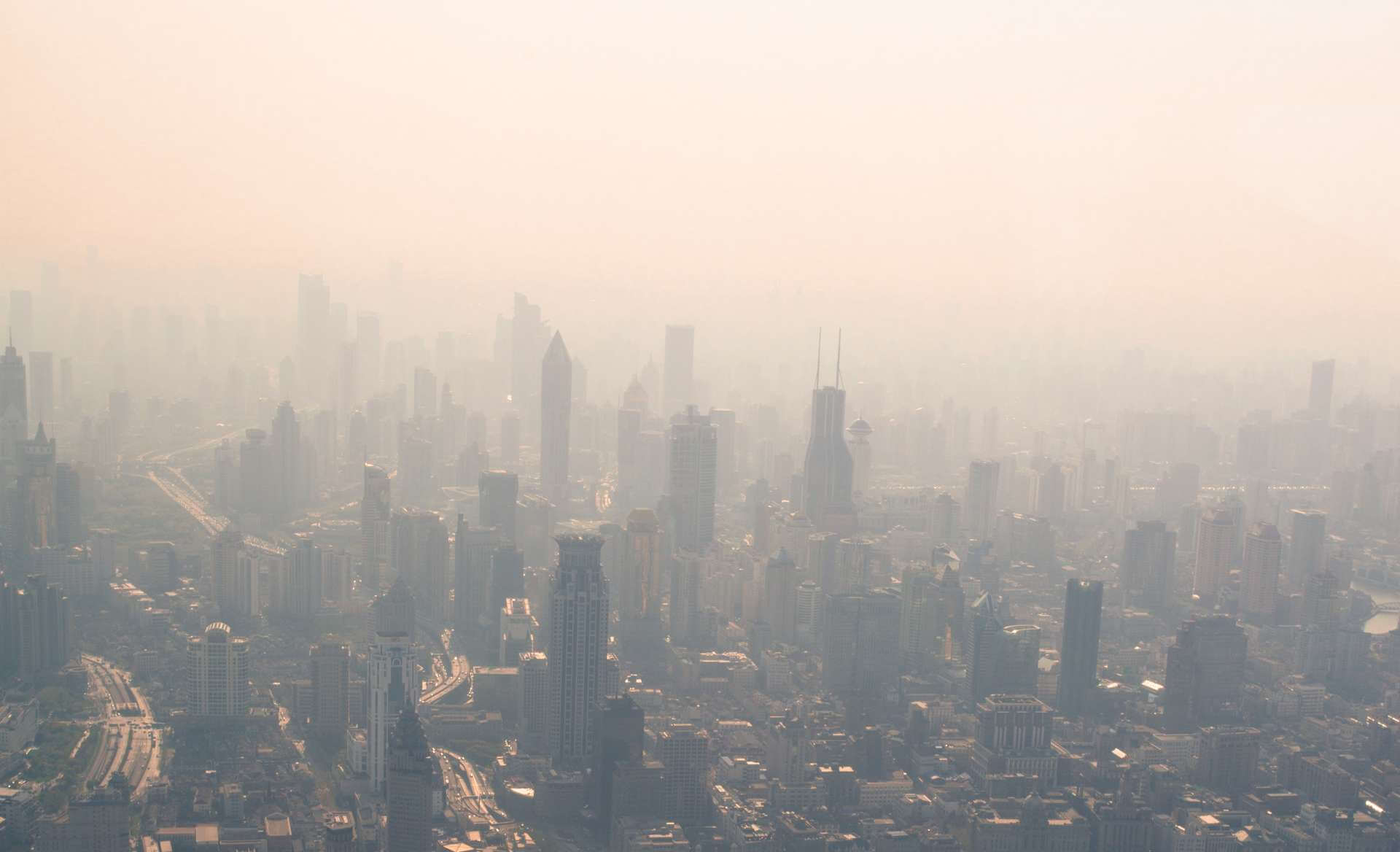
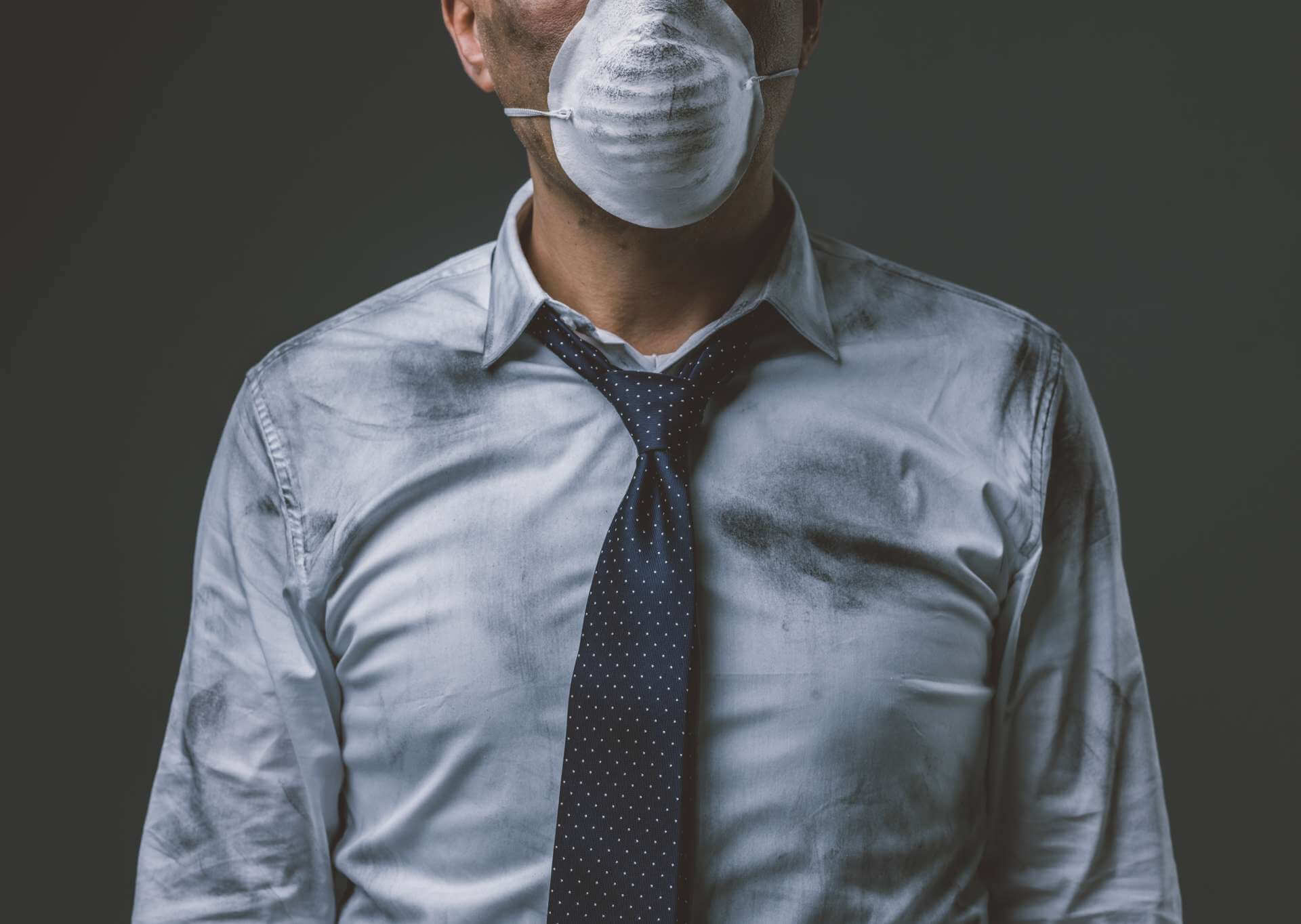
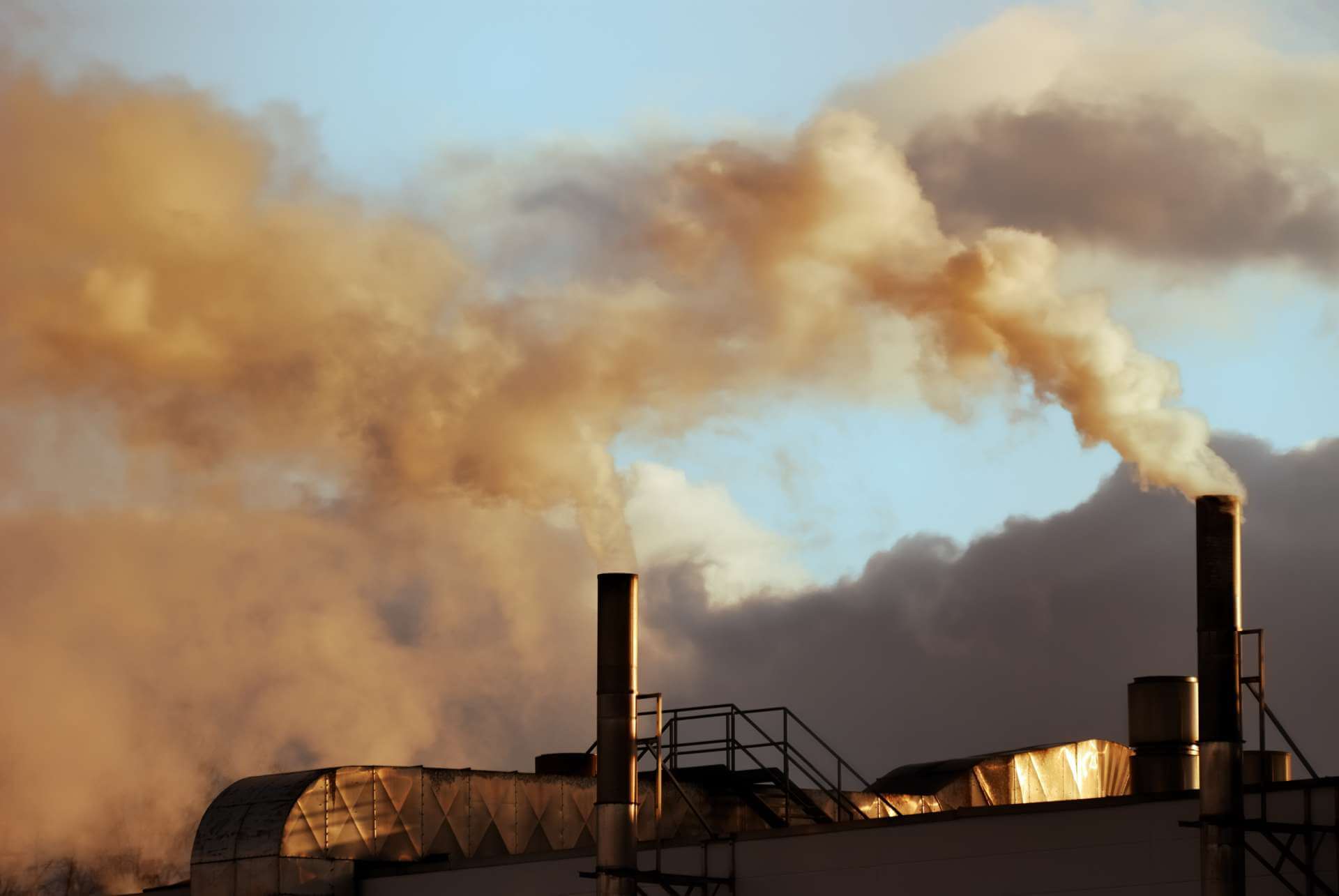
Once these pollutants enter the dermis and circulatory system, they pose even greater risks. Along with extended exposure and bioaccumulation the more immediate result is generally inflammation and the presence of oxidative stress. Prolonged exposure of the skin to air pollutants is associated with skin aging and inflammatory or allergic skin conditions such as atopic dermatitis, eczema, psoriasis, acne, and potentially skin cancer.
Floating detritus isn’t the only concern
Air pollutions exists in many forms and includes not only suspected particles but other airborne chemicals such as polycyclic aromatic hydrocarbons (PAHs), volatile organic compounds (VOCs), nitrogen oxides (NOx), and others. The negative consequences of these pollutants are exacerbated by UV exposure as well – amplifying the risks.
“Many airborne pollutants are so small that they enter pores in the skin like pebbles dropping into a cup, Bowe says. Others, including the polycyclic aromatic hydrocarbons found in vehicle exhaust emissions or wildfire smoke, are ‘fat-loving’ (lipophilic) and can easily pass through the fat-filled spaces between skin cells. They then enter the circulatory system, where they can cause widespread effects.”
https://www.nature.com/articles/d41586-018-07431-9
Reactive oxidative species (ROS) accumulation has been identified as a major component in aging and significant skin aging. In the skin, UB irradiation is a prime contributor to oxidative stress. But as research considers the effects of air pollution as a driver of ROS the association between pollutants and skin aging and inflammation is becoming clear. The chemicals and pollutants that we encounter daily contribute to the aging process and can negatively interact with our skin.
Skin professionals have warned about the consequences of free radical damage for decades. Research now backs up their concerns and focuses the discussion on preparation and prevention. Obviously, preparation should involve daily use of sunscreen to stave off the negative effects of UV radiation. Along with commonsense good hygiene it’s clear that deep pore cleansers and masks that draw out impurities and contaminants can play a vital part in keep your skin healthy and staving off damage.
Likewise, proper prevention can help to unwind potential inflammation or damage while avoiding the detrimental results of ROS accumulation. This plays a key role in avoiding skin damage and skin aging. After cleansing to remove topical pollutants you should then apply products that deliver antioxidants to the skin while also helping hydrate and support the epidermis. By infusing the skin with free radical fighting antioxidants, you can curtail the runaway negative effects. Keeping the skin’s uppermost barrier healthy and nourished will make it a strong barrier to air pollution.
Reviva is an advocate for preparing skin and preventing inflammation and damage. It’s far easier to avoid problems with your complexion than it is to correct existing skin issues. So, following the standard wisdom of cleansing, moisturizing, and protecting your skin is smart skin care advice.
Related Reading
- https://www.frontiersin.org/articles/10.3389/fenvs.2014.00011/full
- https://www.ncbi.nlm.nih.gov/pmc/articles/PMC6766865/
- https://pubmed.ncbi.nlm.nih.gov/28195077/
- https://goop.com/beauty/skin/how-does-pollution-affect-your-skin/
- https://www.hcplive.com/view/the-impact-of-pollution-on-the-skin
- https://olay.co.uk/skin-care-tips/dry-skin/how-does-pollution-impact-your-skin
- https://pubmed.ncbi.nlm.nih.gov/33527709/



